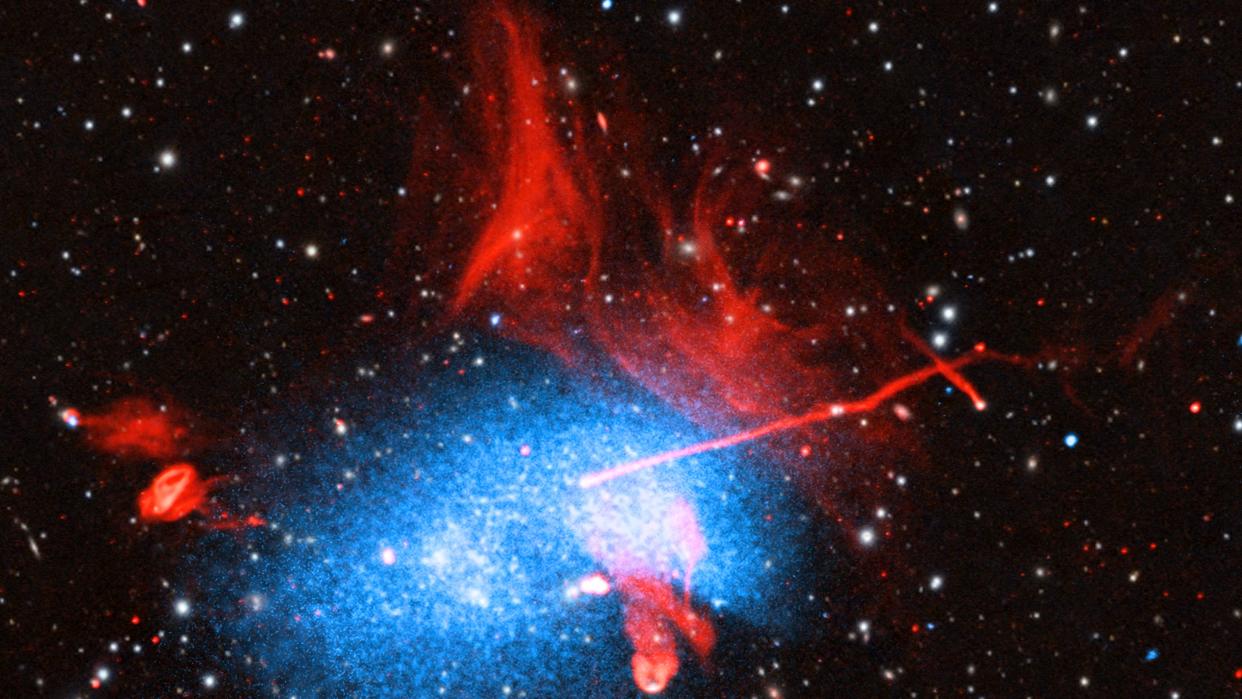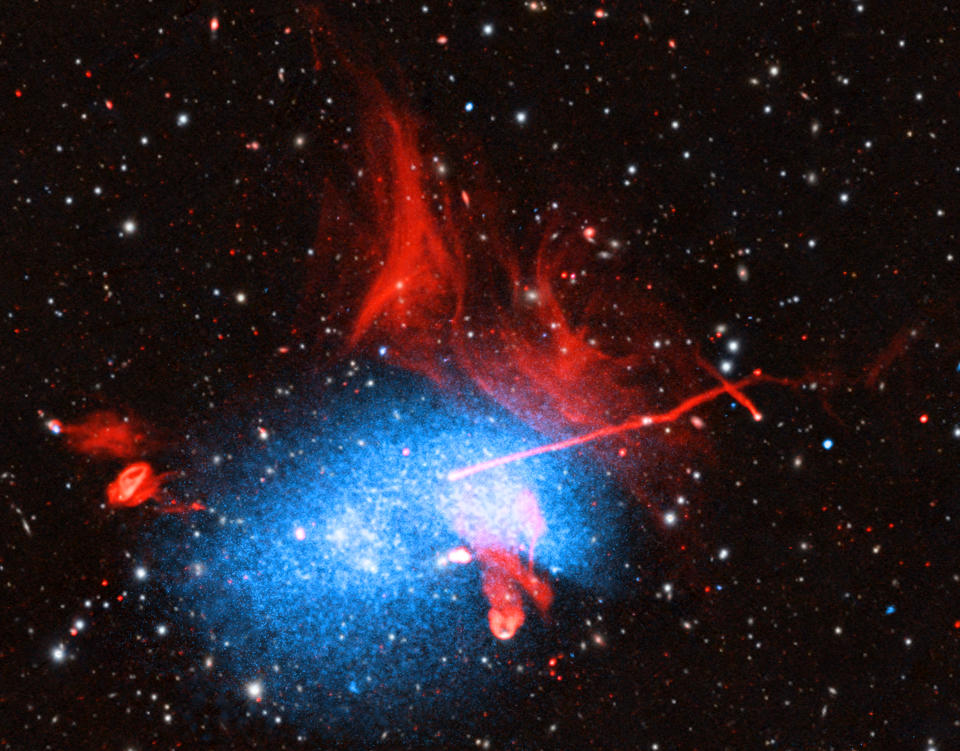Chaotic 'knot' of merging galaxy clusters captured in multiple wavelengths

Some 780 million light-years from Earth, at least three galactic clusters are undergoing a chaotic merger, and using data from a variety of telescopes, astronomers captured the massive collision in a striking new image.
The smaller galactic clusters, each of which comprises hundreds or thousands of individual galaxies, are combining to form an even larger galactic cluster known as Abell 2256.
To determine what's going on inside this entanglement, astronomers compiled data from NASA's Chandra X-ray Observatory and the European Space Agency's XMM-Newton, both of which are space telescopes, as well as Pan-STARRS at Haleakala Observatory in Hawaii; the Giant Metrewave Radio Telescope in Pune, India; the Low Frequency Array in the Netherlands and neighboring European countries; and the Very Large Array near Socorro, New Mexico.
Related: Iconic James Webb Space Telescope images get X-ray vision boost

The result is a composite image showing multiple wavelengths: X-rays in blue, radio waves in red, and optical and infrared light in yellow. The X-rays indicate clouds of hot gas, while the radio waves show jets of energy shooting out from the black holes at the centers of galaxies throughout the cluster, as well as "relics," or filamentary structures showing old shock waves from the violent collision. The optical and infrared dots indicate individual galaxies within Abell 2256.
Related stories:
— Giant galaxy cluster collision triggers vast shock wave stretching over a million light-years long
— Breathtaking image of galaxy cluster made by merging X-ray and radio data
— Galactic collisions act as a 'cosmic delivery service' for hungry monster black holes
Kamlesh Rajpurohit, an astronomer at the University of Bologna in Italy who leads a team studying Abell 2256, hopes to use images such as this one to unravel the mysteries of how these enormous galactic clusters, which are among the biggest structures in the universe, come to be. One reason they're an intriguing subject to study is that galactic clusters are the largest known particle accelerators in the universe, theorized to be the source of mysterious cosmic rays. With such a detailed image, astronomers can continue to study the potential origin of these mysterious blasts of energy, which travel near the speed of light.
Rajpurohit and his colleagues have published two papers analyzing Abell 2256 — the first in The Astrophysical Journal in March 2022, and the second in the journal Astronomy and Astrophysics in January 2023 — and more research is underway.
Follow Stefanie Waldek on Twitter @StefanieWaldek. Follow us on Twitter @Spacedotcom and on Facebook.

